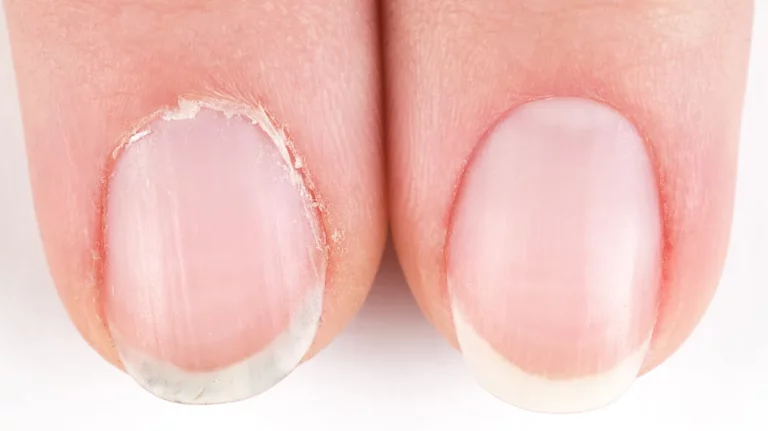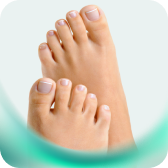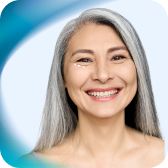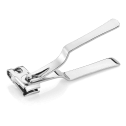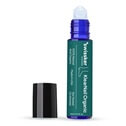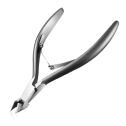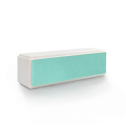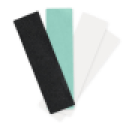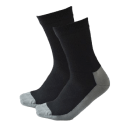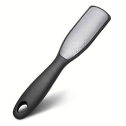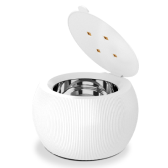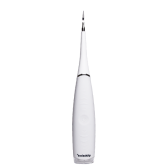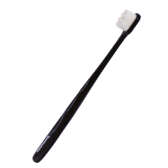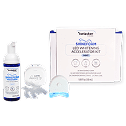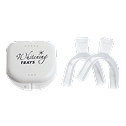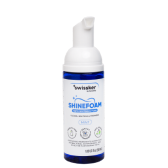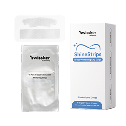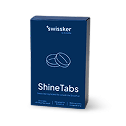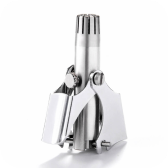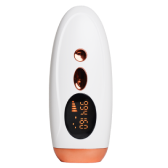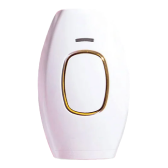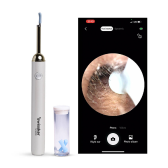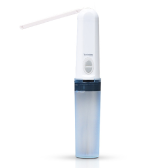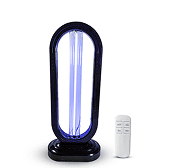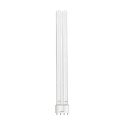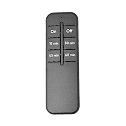What are Cuticles?
Cuticles are the thin layer of skin that covers the base of the nail, also known as the nail fold. They are a natural part of the body and serve an important purpose in protecting the nail bed from infection and damage.
The cuticles are made up of several layers of skin cells that form a barrier around the nail. They work to keep bacteria and other harmful substances from entering the body through the nail bed. The cuticles also help to keep the nails moist and flexible, preventing them from becoming dry and brittle.
While cuticles serve an important purpose, they can also be a source of cosmetic concern for many people. Excess cuticle skin can create a rough or unsightly appearance around the nails, and can even lead to discomfort or pain if left unchecked.
To maintain healthy cuticles, it’s important to avoid cutting or trimming them too aggressively. This can damage the nail bed or even lead to infection. Instead, regular maintenance with a cuticle pusher or gentle trimming with scissors can help keep the cuticles in check.
It’s also important to keep the cuticles moisturized to prevent dryness and cracking. Using a cuticle oil or cream regularly can help keep the skin soft and supple, while also promoting healthy nail growth.
How to Remove Cuticles
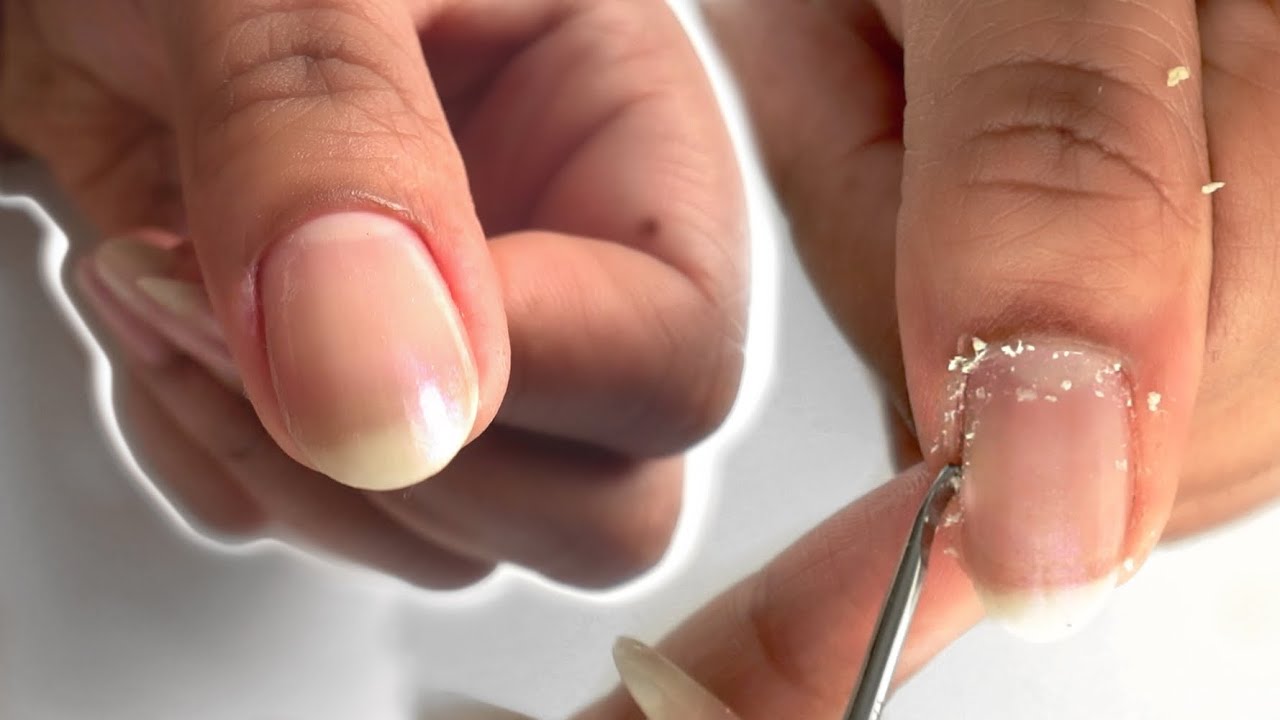
Maintaining healthy and well-groomed cuticles is an essential part of a nail care routine. Cuticles act as a protective barrier that prevents bacteria and other harmful substances from entering the nail bed.
Pushing back cuticles and removing excess skin can help improve the appearance of your nails. A nail buffer block can also help as an additional tool to use after for shining nails, read this article to learn how to use a nail buffer block.
This article will provide tips on explaining what is a cuticle cutter and other similar tools, how to push back cuticles, remove cuticles, use a cuticle trimmer, soften cuticles, and fix cuticles. Following these tips will help you maintain healthy and beautiful cuticles.
Cuticle Cutter, Cuticle Pusher, Cuticle Nipper, Cuticle Scissors, Cuticle Remover; What’s the difference?
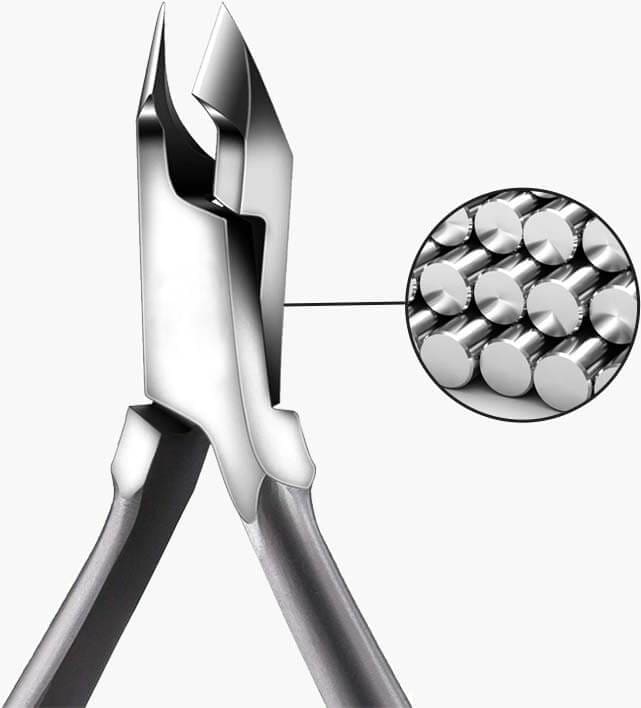
Proper nail care and grooming includes managing the cuticles, which can be done using various tools such as cuticle cutters, removers, pushers, nippers, and scissors. While these tools serve a similar purpose, they differ in their uses and purposes. This article will provide an overview of cuticle cutters and other similar tools, their differences, and which tool is the best cuticle cutter to use depending on personal preference and the amount of excess cuticle skin.
What Are Cuticle Cutters and Other Similar Tools?
Cuticle cutters, removers, pushers, nippers, and scissors all have their own unique uses and purposes, we will explain in this article.
Differences Between Cuticle Cutters and Other Tools – Which one is better?
Cuticle cutters, removers, pushers, nippers, and scissors all have their own unique features and differences. Understanding these differences is essential to choosing the right tool for your needs and avoiding injury or damage to the cuticles or nail bed.
When it comes to managing cuticles, there are several different tools available, each with its own set of advantages and disadvantages. Choosing the right tool for your needs depends on personal preference and the amount of excess cuticle skin. Here’s a closer look at which tool is best for different scenarios.
What is a Cuticle Cutters

Cuticle cutters are small, sharp tools with a curved blade that allows for precise cutting of excess cuticle skin. They should only be used to remove dead skin and should never be used to cut live tissue. Cuticle cutters are best used by professionals or those with experience using them to avoid damaging the skin or nail bed.
Cuticle cutters are best used for removing excess cuticle skin that is already dead. Cuticle cutters have a sharp, curved blade that allows for precise cutting, but can be dangerous if not used correctly. It’s best to leave cuticle cutting to professionals or those with experience using them.
Cuticle Removers
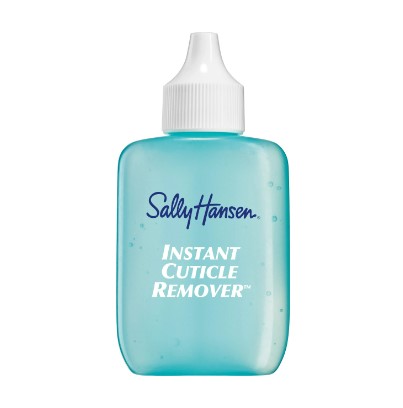
Cuticle removers are liquid or gel-based products that are applied to the cuticles to soften and dissolve them. They contain ingredients such as alpha-hydroxy acids or urea, which help to break down dead skin cells. Cuticle removers are ideal for those with stubborn cuticles that are difficult to push back or trim with other tools.
Cuticle removers are ideal for those with stubborn cuticles that are difficult to push back or trim with other tools. Cuticle removers are easy to use and are a great alternative to cutting or trimming the cuticles.
Cuticle Pushers
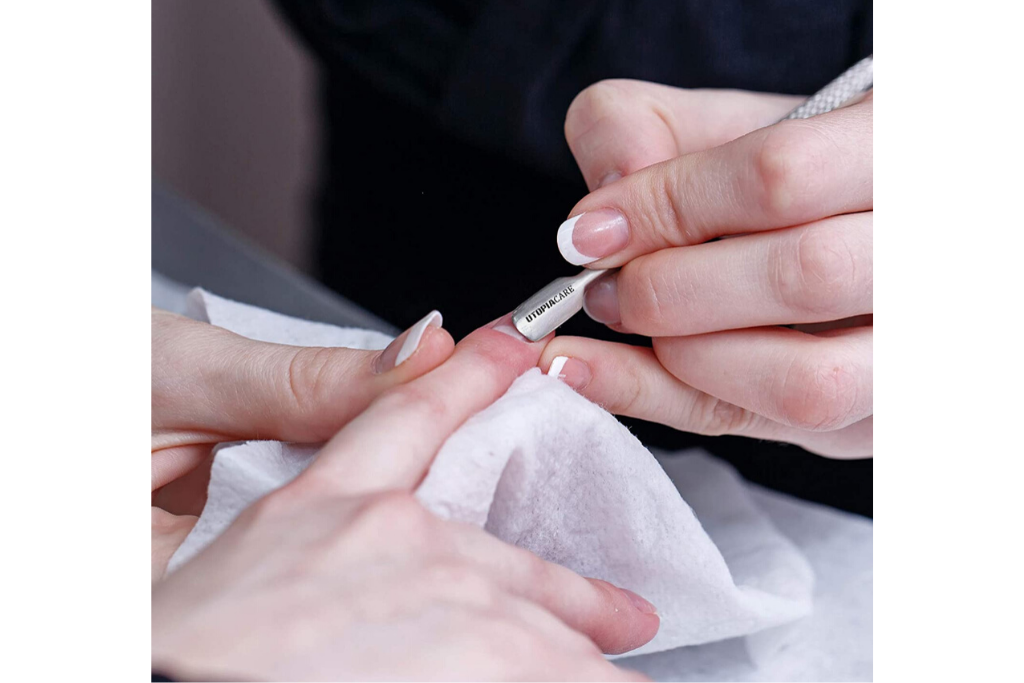
Cuticle pushers are usually made of wood or rubber and have a flat end for pushing and a pointed end for cleaning under the nails. They are used to push back the cuticles from the nail bed. Cuticle pushers are gentle and are perfect for those who prefer a non-invasive method of managing their cuticles.
Cuticle pushers are gentle and ideal for those who prefer a non-invasive method of managing their cuticles. Cuticle pushers are perfect for regular maintenance and can be used to push back the cuticles without cutting or trimming.
Cuticle Nippers
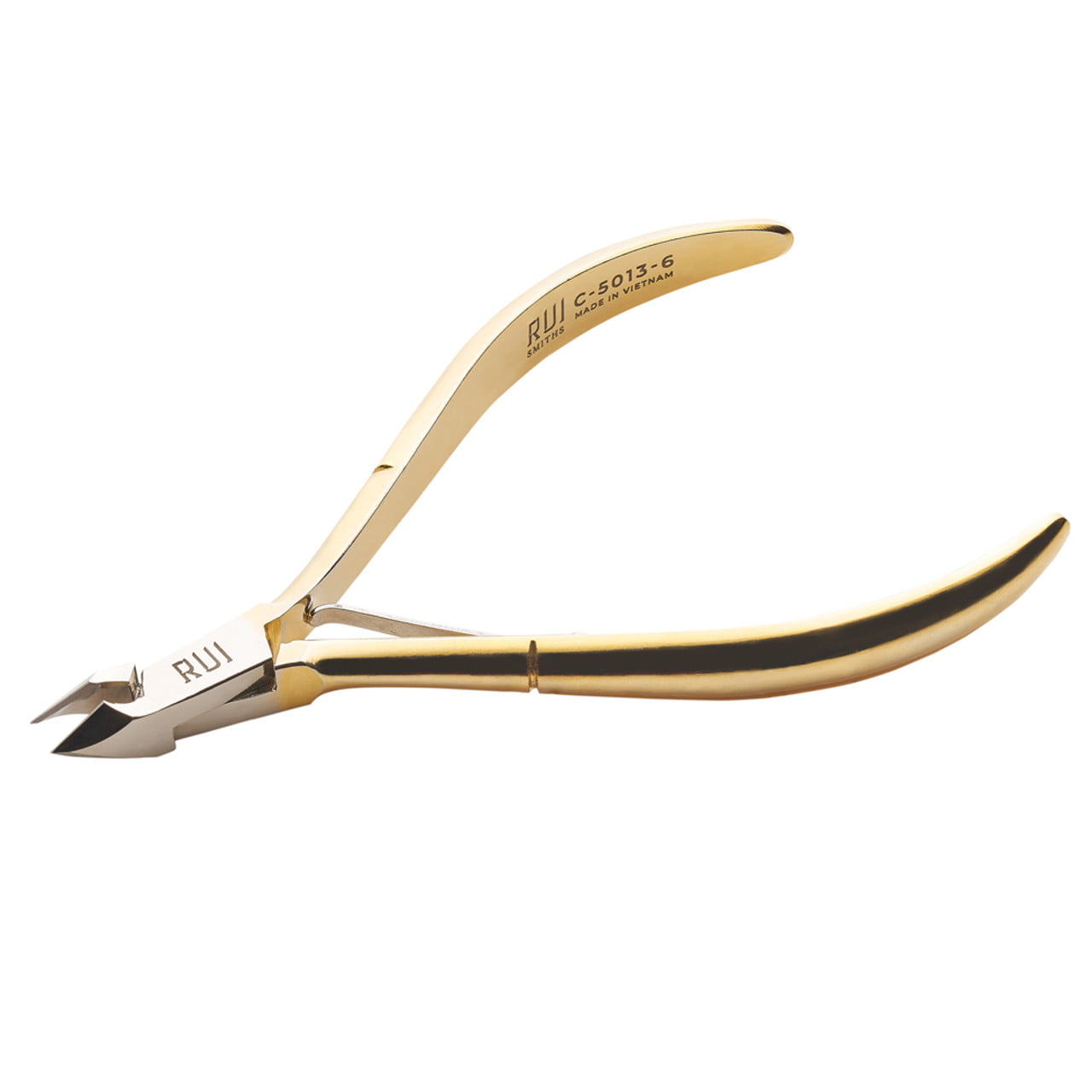
Cuticle nippers and cuticle cutters are both tools used for managing cuticles, but they differ in their design and function.
Cuticle nippers have a less curved blade than cuticle cutters and are used to remove excess cuticle skin. They should only be used to remove dead skin and should never be used to cut live tissue. Cuticle nippers are ideal for those with a lot of excess cuticle skin that needs to be removed. They should only be used by professionals or those with experience using them to avoid injuring the skin or nail bed.
Cuticle cutters, on the other hand, have a curved blade that allows for precise cutting of excess cuticle skin that is already dead. They should not be used to cut live tissue or healthy cuticles. Cuticle cutters are best used by professionals or those with experience using them to avoid damaging the skin or nail bed.
Both cuticle nippers and cuticle cutters are made of high-quality stainless steel, which is durable and easy to sterilize. They should be cleaned and sterilized after each use to prevent infection or the spread of bacteria.
When choosing between cuticle nippers and cuticle cutters, it’s important to consider the amount of excess cuticle skin that needs to be removed. Cuticle nippers are ideal for those with a lot of excess cuticle skin, while cuticle cutters are better for those who want a more precise cut.
Regardless of which tool is chosen, it’s important to always soften the cuticles before using any tool to prevent injury, and to moisturize afterwards to prevent dryness and cracking. Additionally, it’s crucial to use the tools correctly to avoid injury or damage to the nail bed or cuticle area.
Cuticle Scissors
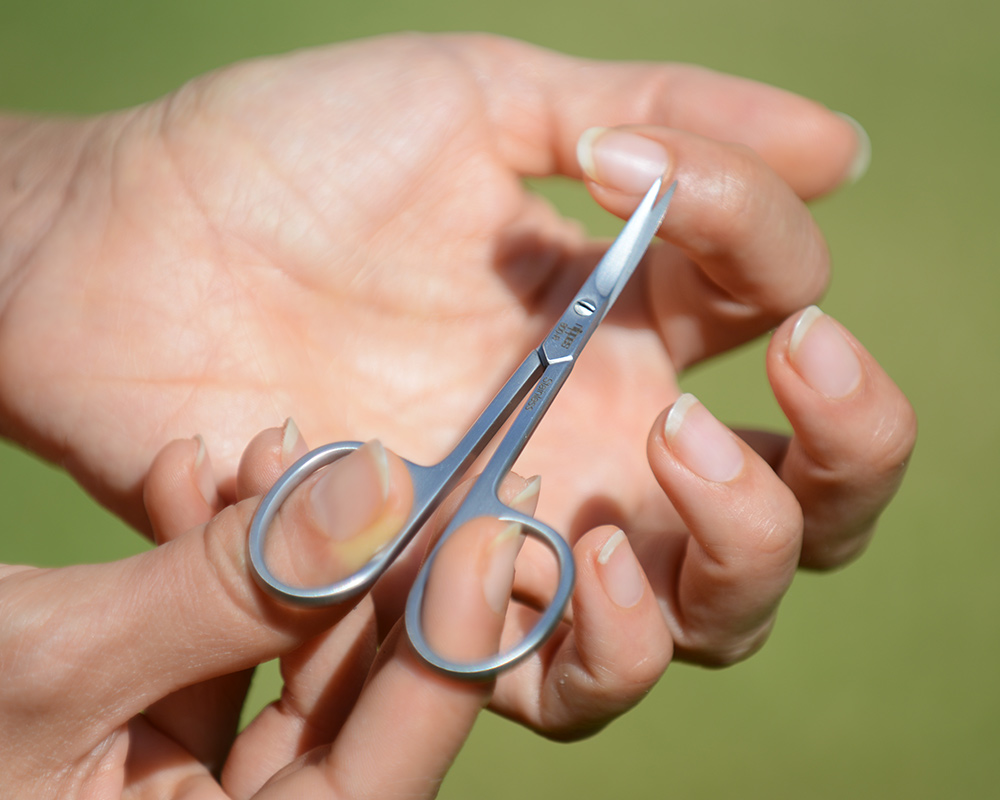
Cuticle scissors have a curved blade that allows for precision cutting of excess cuticle skin that is already dead. They are ideal for those who want a more precise cut and have less excess cuticle skin to remove. Cuticle scissors are a good alternative to cuticle cutters for those who prefer a gentler approach.
How to Moisturize Cuticles
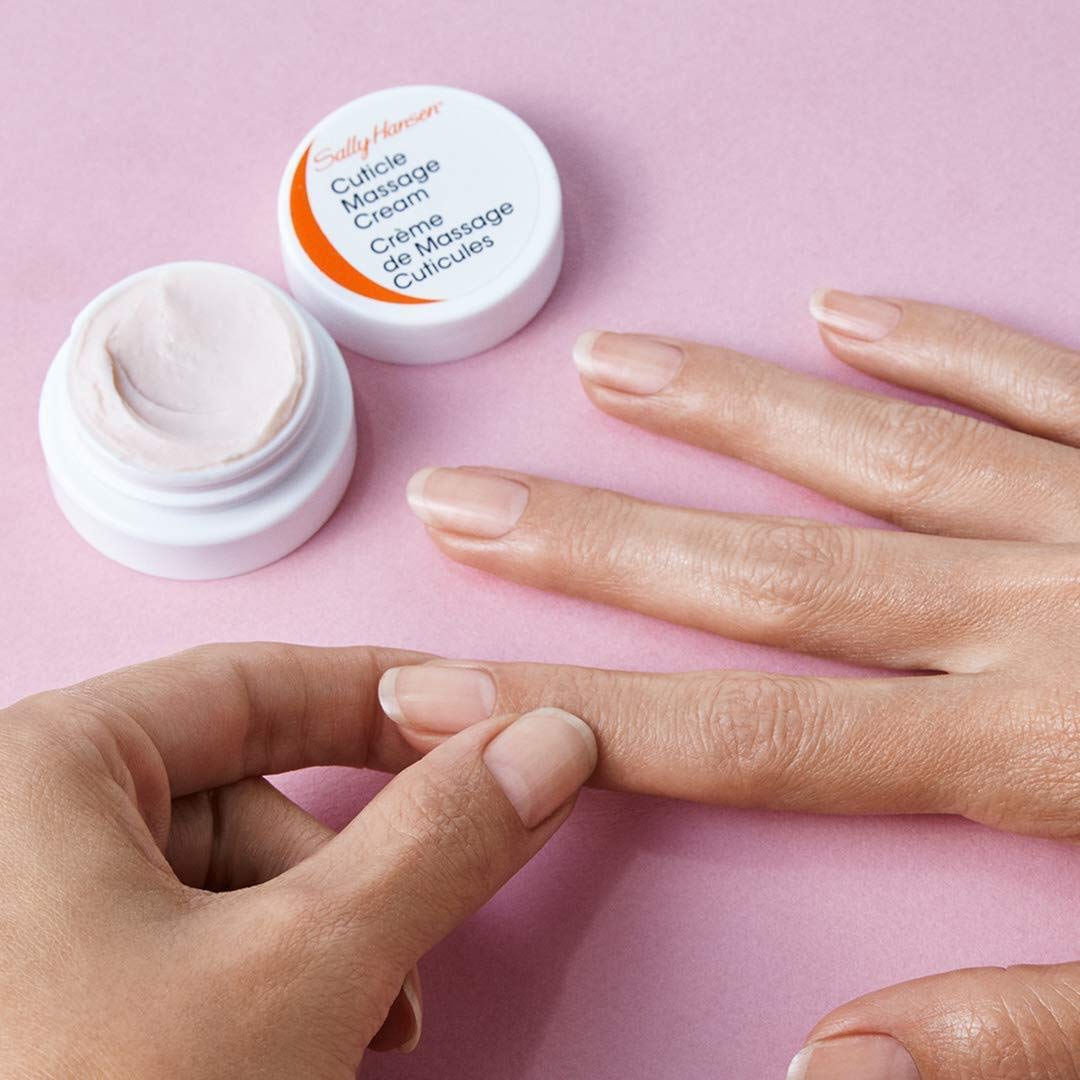
Moisturizing your cuticles is an important part of maintaining healthy and beautiful nails. Dry cuticles can lead to discomfort, cracking, and even infection. Here are some tips on how to moisturize cuticles:
- Use Cuticle Oil: Cuticle oil is a great way to moisturize your cuticles. It’s a specially formulated oil that is designed to nourish and hydrate the skin around your nails. Simply apply a small amount of cuticle oil to your fingertips and massage it into your cuticles.
- Use Cuticle Cream: Cuticle cream is another great option for moisturizing your cuticles. It’s a thicker formula than cuticle oil and can be applied before bed for an intense overnight treatment. Simply apply a small amount of cuticle cream to your fingertips and massage it into your cuticles before going to bed.
- Apply Hand Cream: Hand cream can also be used to moisturize your cuticles. Choose a hand cream that is rich and nourishing, and apply it to your hands and cuticles throughout the day. This will help keep your hands and cuticles soft and hydrated.
- Soak Your Fingertips: Soaking your fingertips in warm, soapy water for 5-10 minutes can also help moisturize your cuticles. This will help soften the skin and make it easier to push back or trim the cuticles.
- Avoid Harsh Chemicals: Harsh chemicals found in cleaning products and detergents can dry out your cuticles. Wear gloves when cleaning or doing household chores to protect your hands and cuticles.
In summary, moisturizing your cuticles is an important part of maintaining healthy and beautiful nails. Using cuticle oil or cream, applying hand cream, soaking your fingertips, and avoiding harsh chemicals are all effective ways to moisturize your cuticles. By incorporating these tips into your daily routine, you can keep your cuticles looking their best and enjoy beautiful and healthy nails.
How to Soften the cuticles
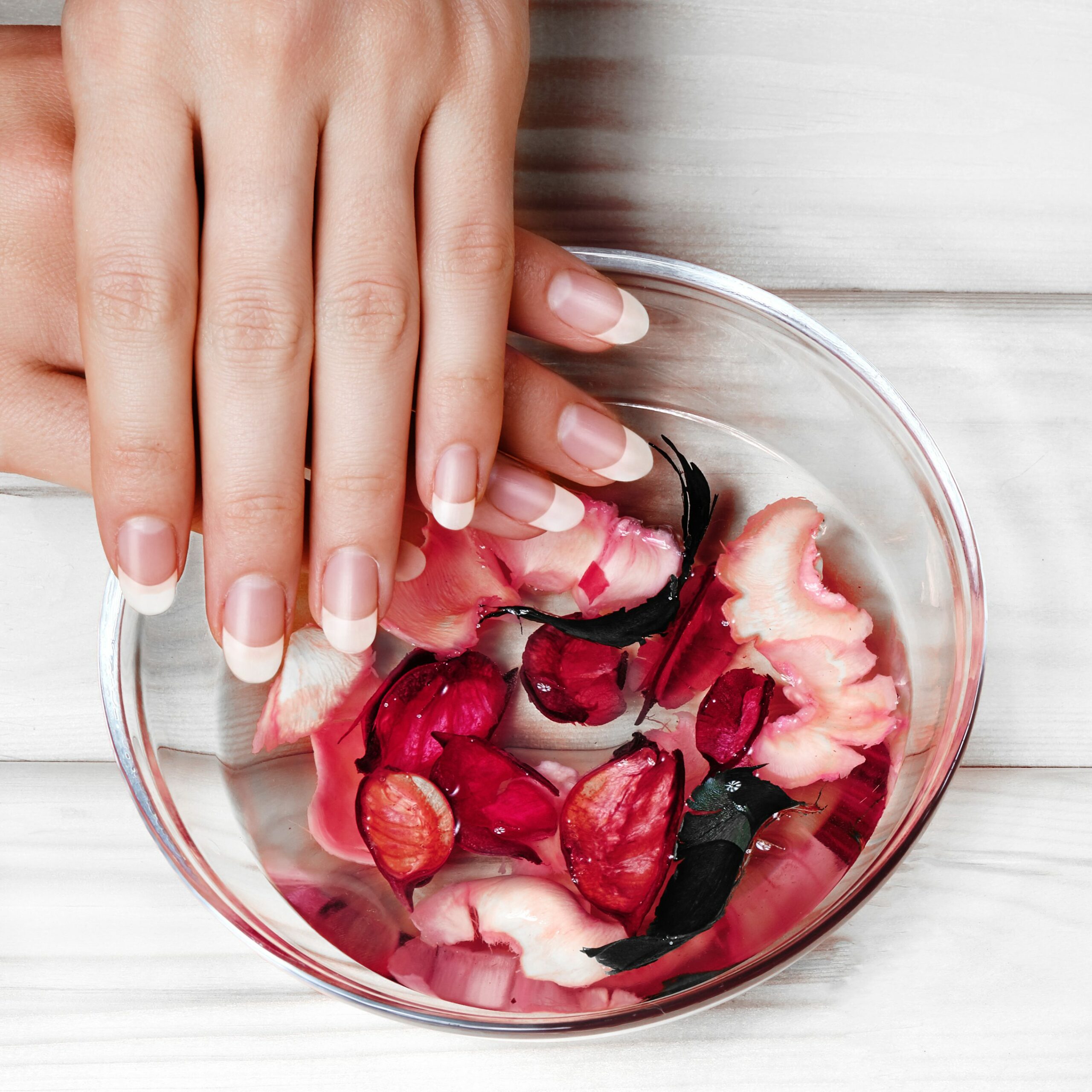
Softening your cuticles before pushing them back or removing excess skin is an important part of maintaining healthy and beautiful nails.
Dry cuticles can lead to discomfort, cracking, and even infection. Here are some tips on how to soften your cuticles:
- Soak Your Fingertips: Soaking your fingertips in warm, soapy water for 5-10 minutes can help soften your cuticles. This will help make it easier to push back or trim the cuticles. You can also add a few drops of essential oil or Epsom salt to the water for added relaxation.
- Use a Cuticle Softener: Cuticle softeners are specially formulated products that help soften the cuticles. They usually contain alpha-hydroxy acids, urea, or other hydrating ingredients. Apply the softener to your cuticles according to the product instructions, and gently massage it into the skin.
- Apply Cuticle Oil: Cuticle oils are specially formulated oils designed to moisturize and nourish the cuticles. They are typically made with a blend of natural oils such as jojoba, almond, and avocado oil, which help to soften and hydrate the skin. Some cuticle oils also contain vitamin E, which is known for its antioxidant properties and ability to promote healthy nail growth. Essential oils such as lavender and tea tree oil are often added for their antibacterial and anti-inflammatory properties. Cuticle oils are typically applied to the cuticles and massaged in gently to promote absorption and enhance circulation. They are an essential part of nail care and can help prevent dryness, cracking, and other common cuticle-related issues.
- Use a Warm Towel: Place a warm, damp towel over your fingertips for a few minutes to help soften the cuticles. This will help hydrate the skin and make it easier to push back or trim the cuticles.
- Avoid Harsh Chemicals: Harsh chemicals found in cleaning products and detergents can dry out your cuticles.
Softening your cuticles is an important part of maintaining healthy and beautiful nails. Soaking your fingertips, using a cuticle softener or oil, applying a warm towel, and avoiding harsh chemicals are all effective ways to soften your cuticles. By incorporating these tips into your daily routine, you can keep your cuticles looking their best and enjoy beautiful and healthy nails.
How to Push Back Cuticles
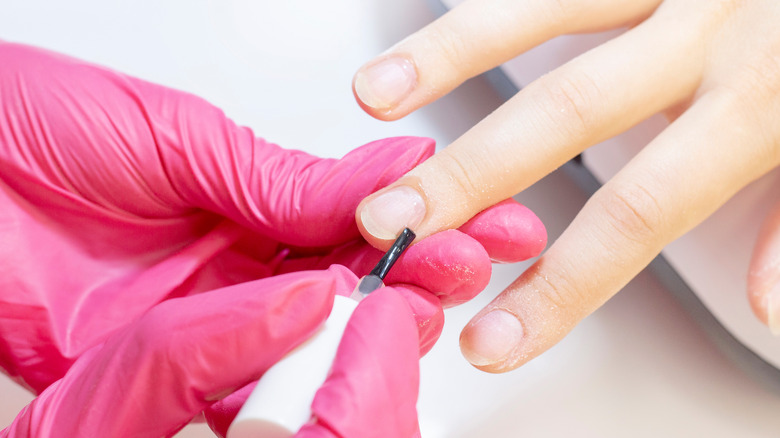
Pushing back your cuticles is an essential part of maintaining healthy and well-groomed nails. Cuticles act as a protective barrier that prevents bacteria and other harmful substances from entering the nail bed. Here are some tips on how to safely push back your cuticles:
- Soften Your Cuticles: Softening your cuticles before pushing them back is crucial to prevent injury and ensure a smooth process. You can do this by soaking your fingertips in warm, soapy water for 5-10 minutes or by using a cuticle softener product.
- Use a Cuticle Pusher: A wooden or rubber cuticle pusher is recommended for pushing back your cuticles. Metal pushers can be too sharp and cause injury. Gently push back your cuticles by starting at one side of the nail and working your way around. Be sure to avoid pushing the cuticles too far back as this can damage the nail bed and increase the risk of infection.
- Be Gentle: When pushing back your cuticles, it’s important to use a gentle touch to prevent injuring the skin. Applying too much pressure or pushing too hard can cause discomfort and even bleeding.
- Avoid Cutting Your Cuticles: Cutting your cuticles can lead to infection and damage to the nail bed. Instead of cutting your cuticles, use a cuticle pusher to gently push them back and trim any excess skin with a sterilized cuticle nipper.
- Moisturize: After pushing back your cuticles, don’t forget to moisturize the area to prevent dryness and cracking.
Pushing back your cuticles is an essential part of maintaining healthy and well-groomed nails. Softening your cuticles, using a wooden or rubber cuticle pusher, being gentle, avoiding cutting your cuticles, and moisturizing afterwards are key to achieving the best results. With these tips, you can keep your cuticles looking their best and prevent injury or infection.
How to Cut Cuticles
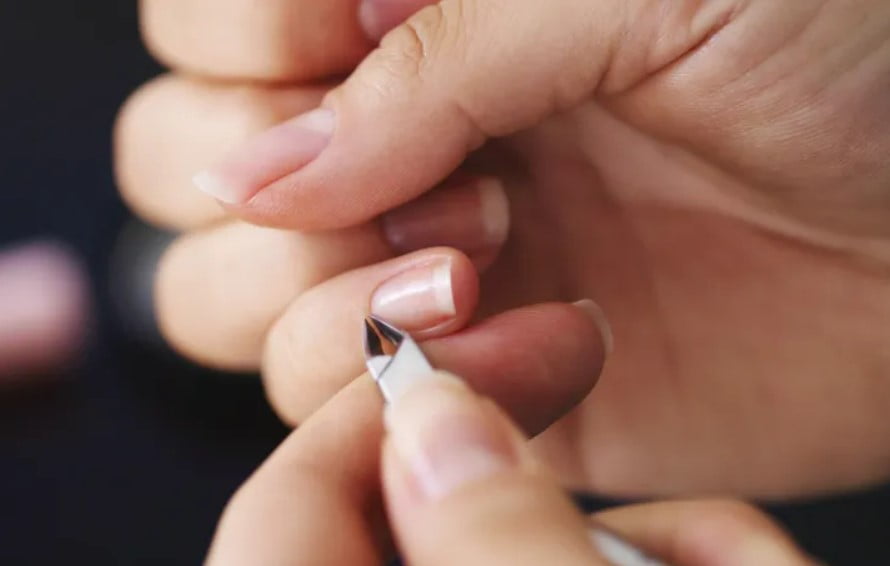
Removing excess cuticle skin can help improve the appearance of your nails and prevent the buildup of dead skin cells. After pushing back your cuticles, you may notice some excess skin around the nail bed. Here are some tips on how to safely remove cuticles:
- Soften the Cuticles: Softening the cuticles before removing them is essential to prevent injury and ensure an easy process. You can soak your fingertips in warm, soapy water for 5-10 minutes or use a cuticle softener product.
- Use a Cuticle Nipper or Scissors: To remove excess cuticle skin, you can use a pair of cuticle nippers or scissors. Be sure to choose a sterilized tool to prevent infection. You should also only remove the dead or loose skin, and avoid cutting live tissue as this can lead to bleeding and infection.
- Start at the Base of the Nail: Begin by trimming the excess skin at the base of the nail. Work your way around the nail, removing any dead or loose skin that you encounter.
- Be Gentle: When removing cuticles, it’s important to be gentle and take your time. Avoid applying too much pressure or cutting too deeply, as this can cause injury or bleeding.
- Moisturize: After removing cuticles, it’s important to moisturize the area to prevent dryness and cracking. You can use a cuticle oil, cream or lotion to keep the area hydrated and nourished.
In summary, removing cuticles can help maintain healthy and well-groomed nails. Softening the cuticles before removing them, using sterilized tools, being gentle, and moisturizing after removal are key to achieving the best results. With these tips, you can keep your cuticles looking their best and prevent the buildup of dead skin cells.
How to Use a Cuticle Trimmer or Cutter
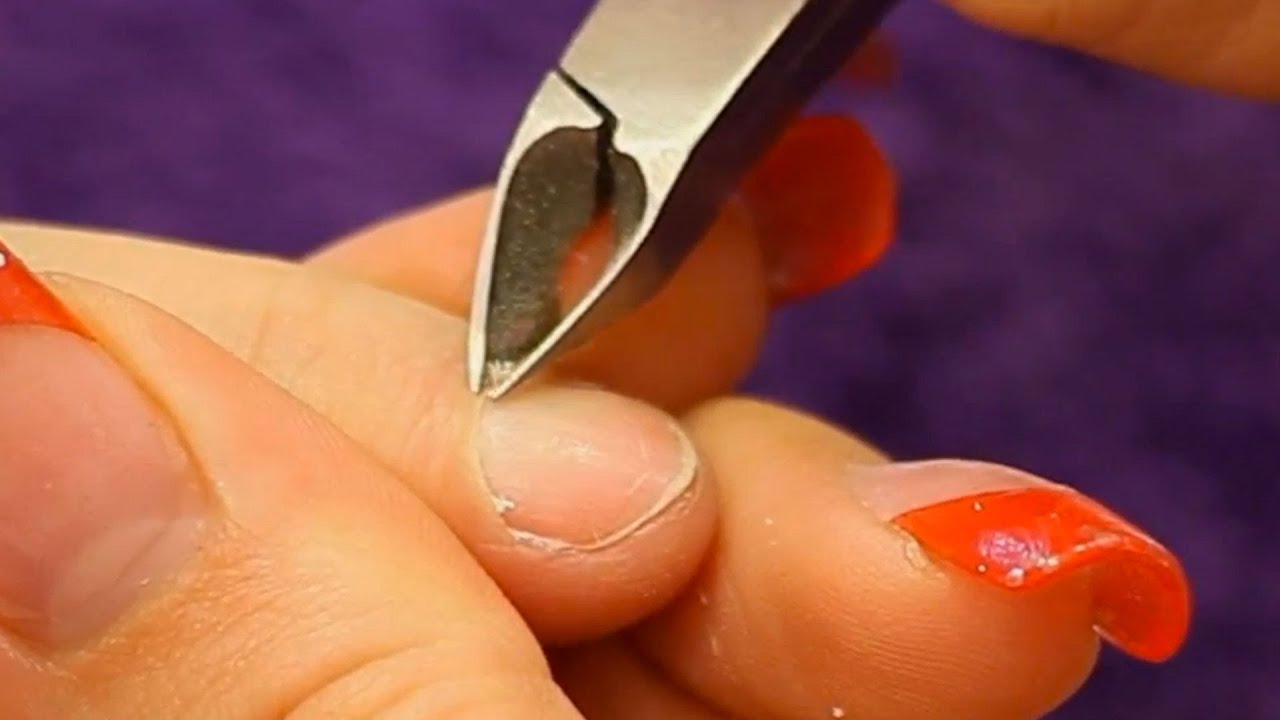
A cuticle trimmer or cutter is a handy tool that can be used to remove excess cuticle skin. Here are some tips on how to safely use a cuticle cutter:
- Choose the Right Tool: Select a cuticle trimmer that is sharp and has a curved blade. Avoid using a trimmer with a straight blade as this can cause injury.
- Start at the Base of the Nail: Begin by trimming the excess skin at the base of the nail. Work your way around the nail, removing any dead or loose skin that you encounter.
- Avoid Cutting Live Tissue: When using a cuticle cutter, be sure to only remove the dead or loose skin. Avoid cutting live tissue as this can lead to bleeding and infection.
- Moisturize: After using a cuticle trimmer, it’s important to moisturize the area to prevent dryness and cracking. You can use a cuticle oil, cream or lotion to keep the area hydrated and nourished.
How to Fix Cuticles
Dry or cracked cuticles can be uncomfortable and unsightly. Here are some tips on how to fix cuticles and keep them looking healthy:
- Trim Hangnails: If you have a hangnail, trim it using sterilized cuticle nippers. Be sure to avoid cutting live tissue to prevent injury and infection.
- Visit a Professional: If your cuticles are severely dry or cracked, or if you have an infection, you may want to consider visiting a professional. A nail technician or dermatologist can help assess the condition of your cuticles and provide appropriate treatment.
Conclusion
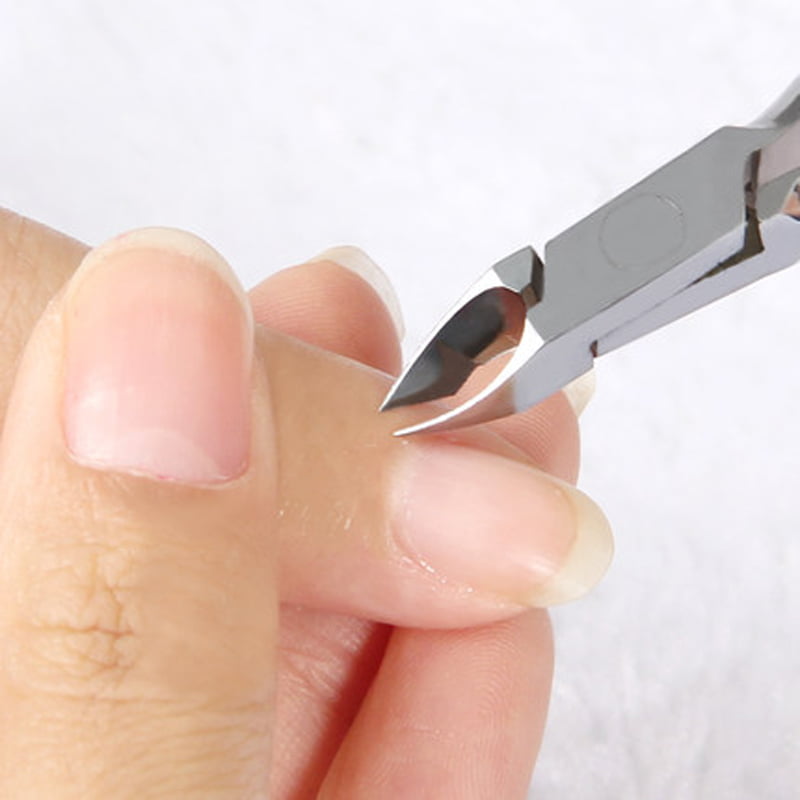
Maintaining healthy and well-groomed cuticles is an essential part of a nail care routine. Softening the cuticles before pushing them back or removing excess skin, using a gentle cuticle pusher or trimmer, being careful not to cut live tissue, moisturizing regularly, and fixing dry or cracked cuticles are all important aspects of maintaining healthy cuticles.
It’s also important to practice good hygiene when it comes to nail care. Wash your hands regularly, avoid sharing nail tools with others, and make sure that salon tools are properly sanitized before use.
Remember to always be gentle and cautious when grooming your cuticles to prevent injury and infection. If you have any concerns or questions about caring for your cuticles, don’t hesitate to speak with a nail technician or dermatologist.
By following these tips, you can achieve healthy and well-groomed cuticles that complement your overall nail care routine. Keep your cuticles looking their best and enjoy beautiful and healthy nails.



